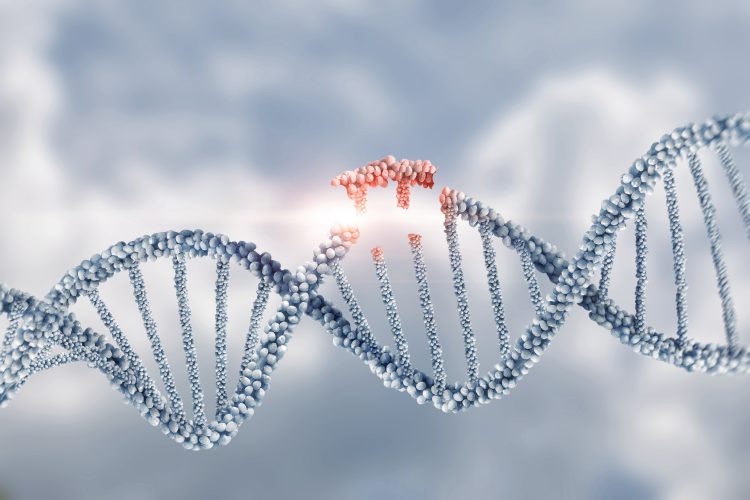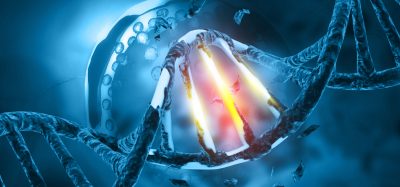Tessera Therapeutics: addressing Alpha-1 Antitrypsin Deficiency
Posted: 18 June 2024 | Ellen Capon (Drug Target Review), Mike Holmes (Tessera Therapeutics) | No comments yet
As the industry looks beyond CRISPR to safely introduce therapeutic genomic changes anywhere in the body, in vivo gene editing holds immense potential to address diseases with a genetic basis. Boston-based biotech Tessera Therapeutics is pioneering the next generation of genetic medicines with its Gene Writing™ platform. At this year’s ASGCT conference, Tessera shared progress on its RNA Gene Writers™, including promising data in preclinical models of alpha-1 antitrypsin deficiency.


What are the features and capabilities of Tessera Therapeutics’ Gene Writing platform?
At Tessera, we are building a broad toolkit of Gene Writers™ to therapeutically edit the genome. Our RNA Gene Writers are designed to efficiently introduce a range of genomic changes from small nucleotide substitutions to exon or gene-sized fragments using all‑RNA compositions. We combine our Gene Writers with our proprietary non-viral delivery platform to enable in vivo delivery of Gene Writers to target cell types including the liver, hematopoietic stem cells and T cells via lipid nanoparticles (LNP). We believe our Gene Writing and delivery platforms will produce transformative genetic medicines to not only cure diseases that arise from errors in a single gene, but also modify inherited risk factors for common diseases and create engineered cells to treat cancer and potentially autoimmune and other diseases.
What are the specific efficacy levels achieved in correcting the mutation in alpha-1 antitrypsin deficiency (AATD) in mouse disease models, and how do these levels compare with natural carriers of the mutation?
AATD is a genetic disease that causes abnormal production of the alpha-1 antitrypsin (A1AT) protein by the liver that can result in damage to both the lungs and the liver. The PiZ mutation in the SERPINA1 gene results in a misfolded A1AT protein that aggregates in the liver, causing hepatic injury, and consequently is unable to reach the lungs to perform its normal function in modulating inflammation and preventing protease-mediated damage. Affected patients can develop respiratory disease such as chronic obstructive pulmonary disease, as well as liver disease, including cirrhosis and liver failure.
We have achieved efficient levels of correction in two different mouse models of AATD bearing the human disease-causing E342K point mutation. In a humanised SERPINA1 diploid mouse model, we achieved an average of 49 percent correction in whole liver samples at a dose of 0.1 mg/kg. In the transgenic PiZ mouse model, our RNA Gene Writers achieved an average of 55 percent correction to wild-type in whole liver samples at a dose of 0.5 mg/kg. These levels exceed the levels of heterozygote carriers of the causative PiZ mutation by 50 percent, who are asymptomatic. Further, our efficiency levels of 55 percent in the PiZ mouse model resulted in 93 percent of A1AT mRNA transcripts being corrected.
Could you elaborate on the mechanism by which the Gene Writing platform corrected the mutation in the transgenic PiZ mouse model of AATD?
RNA Gene Writers are composed of an mRNA encoding a Gene Writer protein and RNA template containing the instructions to make precise edits to the DNA of a cell. These all‑RNA components are packaged into LNPs for intravenous delivery. In the case of the transgenic PiZ mouse model as well as for clinical application to humans with AATD, our RNA Gene Writer is designed to correct the PiZ mutation back to wild-type. The PiZ mutation is a single base pair substitution and responsible for approximately 98 percent of patients with AATD.
The mechanism by which RNA Gene Writers write new DNA into the genome using information encoded on an RNA template is based on target-primed reverse transcription (TPRT), a mechanism first elucidated in the 1980s and early 1990s. TPRT is enabled by four distinct protein domains capable of binding RNA, binding DNA, nicking DNA, and reverse transcribing RNA to DNA.
What was the observed increase in serum concentration of the wild-type AAT protein following the correction of the mutation in mouse livers?
In the transgenic PiZ mouse model of AATD, the 55 percent average level of correction to wild‑type resulted in an average serum wild-type A1AT protein concentration of 118 µmol/L by liquid chromatography-mass spectrometry (LC-MS) and an average of 54 µmol/L by enzyme-linked immunosorbent assay (ELISA), representing more than a five‑fold increase in serum concentration compared to control. Importantly, in this mouse model, 100 percent of the total serum A1AT protein was corrected at the 0.5 mg/kg dose, as measured by LC-MS. In a separate study, we also observed phenotypic improvement in PiZ mouse liver, with treated mice showing a range of approximately ~30 percent to ~50 percent reduction in mutant A1AT protein aggregates across tested doses at day 29.
What implications do these findings have for potential therapeutic applications?
We are encouraged by these results and their potential to translate to clinically meaningful benefits for patients with AATD, for which there is presently no cure. Our findings suggest the possibility of efficiently correcting the underlying genetic error to restore wild-type A1AT protein levels and potentially reverse the liver disease as well as halt the progression of lung disease. We believe this would represent a significant advance from current supportive treatment options that exist today for AATD, which have not demonstrated the ability to substantially alter disease trajectory and only address either lung or liver symptoms separately. We look forward to rapidly advancing this programme toward the clinic.
More broadly, these results add to our growing body of evidence showcasing the vast potential of our Gene Writing platform, including demonstrated efficient editing in mouse models across multiple monogenic diseases, including phenylketonuria, sickle cell disease, and Wilson’s disease.
About the author


Michael joined Tessera in December 2021 as Chief Scientific Officer. Dr Holmes has over 20 years of experience working on the development and clinical translation of different genome editing- and gene therapy-based strategies for the treatment of inherited and acquired diseases. He has a proven track record of translating genomic engineering technologies to product candidates as evidenced by leading ten therapeutic programs across a landscape of ex vivo and in vivo therapies.
Prior to joining Tessera, Dr Holmes served as the Chief Scientific Officer with Ambys Medicines, where he led the research and development efforts in the identification, creation, and advancement of novel therapies for severe liver diseases. Previously, Dr Holmes worked for 17 years at Sangamo Therapeutics, Inc. raising through the ranks to Senior Vice President and Chief Technology Officer. During this time, he was heavily involved in the company’s research and pipeline development of genetic therapies.
Dr Holmes has authored over 60 publications in the field of genome editing and gene regulation and is listed as an inventor of over 40 issued and pending US patents related to genome editing and targeted gene regulation technologies. He holds his PhD in Molecular and Cell Biology from the University of California, Berkeley after earning his BS in Molecular Biology from the University of California, San Diego. He was also listed as one of “The World’s Most Influential Scientific Minds” in 2014 and 2015 by Thomas Reuters and named to the 2020 list of Highly Cited Researchers by Clarivate.
Related topics
Genome Editing, Genomics, In Vivo, Technology, Therapeutics
Related conditions
Alpha-1-antitrypsin deficiency (AATD)
Related organisations
Tessera Therapeutics
Related people
Mike Holmes (Tessera Therapeutics)







